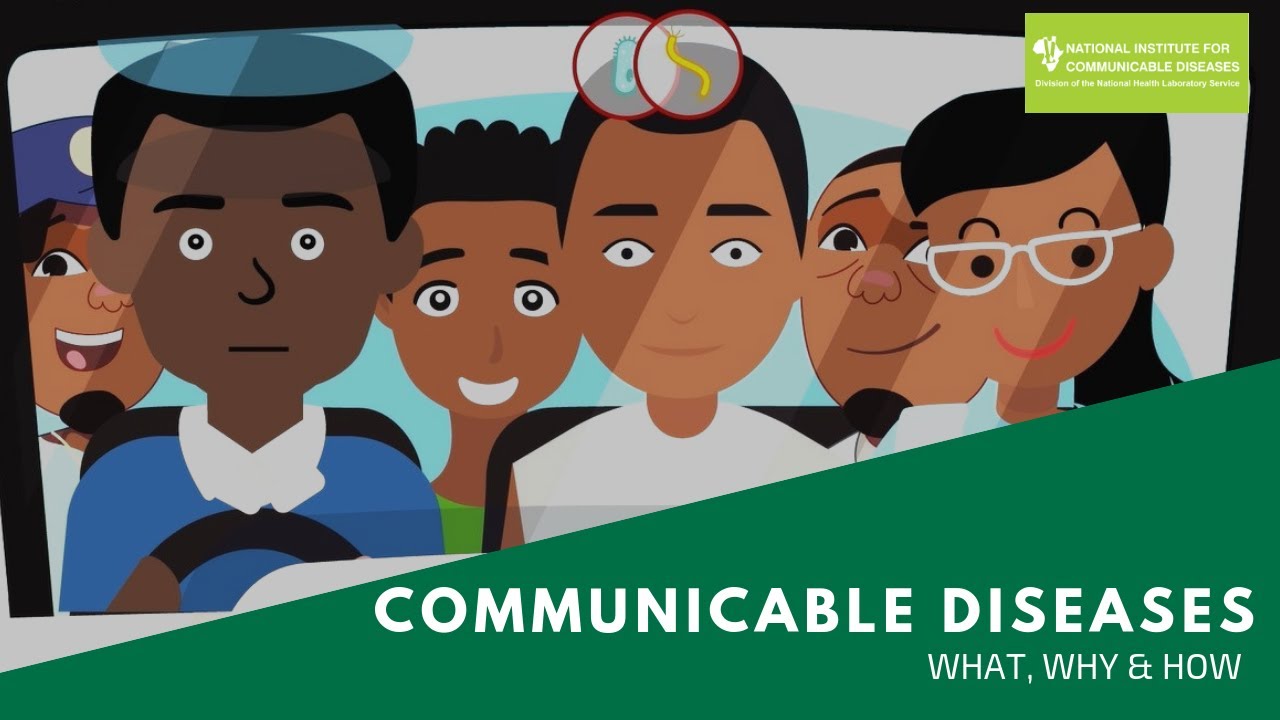GCSE Biology Revision "Communicable and Non-Communicable Disease"
Summary
TLDRThis video explains the difference between communicable and non-communicable diseases, providing examples like measles and coronary heart disease. It also explores how diseases can interact, such as HIV increasing the risk of tuberculosis, and HPV leading to cervical cancer. The video discusses how allergies can result from infections and how physical conditions like arthritis can contribute to mental health issues like depression. The importance of understanding these interactions and their impact on both physical and mental health is emphasized throughout.
Takeaways
- 😀 Communicable diseases can be spread from person to person through pathogens like bacteria or viruses, e.g., measles.
- 😀 Non-communicable diseases cannot be passed from person to person; an example is coronary heart disease.
- 😀 Health is defined as the state of physical and mental well-being, and it can be affected by both communicable and non-communicable diseases.
- 😀 Poor diet, high levels of stress, and harmful life situations can also contribute to ill health, impacting both physical and mental well-being.
- 😀 Diseases can interact with each other. For instance, HIV weakens the immune system, making individuals more susceptible to other diseases like tuberculosis (TB).
- 😀 One disease can cause another, such as how the human papilloma virus (HPV) can lead to cervical cancer in some cases.
- 😀 Allergies, such as certain types of asthma or dermatitis, can be triggered by infections where the immune system overreacts.
- 😀 Physical illnesses like arthritis can lead to mental health conditions like depression due to the pain and isolation caused by the illness.
- 😀 Different types of diseases interacting can lead to worse health outcomes, and it's important to understand these interactions.
- 😀 The importance of learning how diseases interact is emphasized, as it can help in better managing health conditions and improving treatment strategies.
Q & A
What is the difference between communicable and non-communicable diseases?
-Communicable diseases can be spread from person to person, often caused by pathogens like bacteria or viruses, such as measles. Non-communicable diseases cannot be passed from person to person, and an example is coronary heart disease.
Can diseases affect both physical and mental health? Provide an example from the video.
-Yes, diseases can affect both physical and mental health. For example, arthritis, a painful joint condition, can lead to depression due to the difficulty in movement and the isolation it causes.
What is one example of a communicable disease mentioned in the video?
-Measles is an example of a communicable disease, which can be spread from person to person.
What is an example of a non-communicable disease discussed in the video?
-Coronary heart disease is an example of a non-communicable disease, which cannot be passed from person to person.
How can HIV increase the risk of contracting other diseases?
-HIV weakens the immune system, making individuals more vulnerable to infectious diseases like tuberculosis (TB), which can be fatal.
How can one disease cause another, based on the video’s examples?
-The video explains that the human papilloma virus (HPV) is often harmless but can cause cervical cancer in some women. This illustrates how one disease (HPV) can lead to another (cervical cancer).
Can physical illness sometimes lead to mental illness? Provide an example.
-Yes, physical illness can lead to mental illness. An example is arthritis, which causes physical pain and difficulty moving, sometimes leading to depression due to isolation and loss of normal functioning.
What role does stress and poor diet play in health, according to the video?
-Stress, poor diet, and other life situations like working with harmful chemicals can negatively affect both physical and mental health, contributing to illness.
What is the definition of health according to the video?
-Health is defined as the state of physical and mental well-being.
How does the immune system interact with diseases like TB and HIV?
-In most people, the immune system can fight off TB, but for those with a weakened immune system (e.g., people with HIV), the risk of contracting infectious diseases like TB is higher.
Outlines

Cette section est réservée aux utilisateurs payants. Améliorez votre compte pour accéder à cette section.
Améliorer maintenantMindmap

Cette section est réservée aux utilisateurs payants. Améliorez votre compte pour accéder à cette section.
Améliorer maintenantKeywords

Cette section est réservée aux utilisateurs payants. Améliorez votre compte pour accéder à cette section.
Améliorer maintenantHighlights

Cette section est réservée aux utilisateurs payants. Améliorez votre compte pour accéder à cette section.
Améliorer maintenantTranscripts

Cette section est réservée aux utilisateurs payants. Améliorez votre compte pour accéder à cette section.
Améliorer maintenant5.0 / 5 (0 votes)






